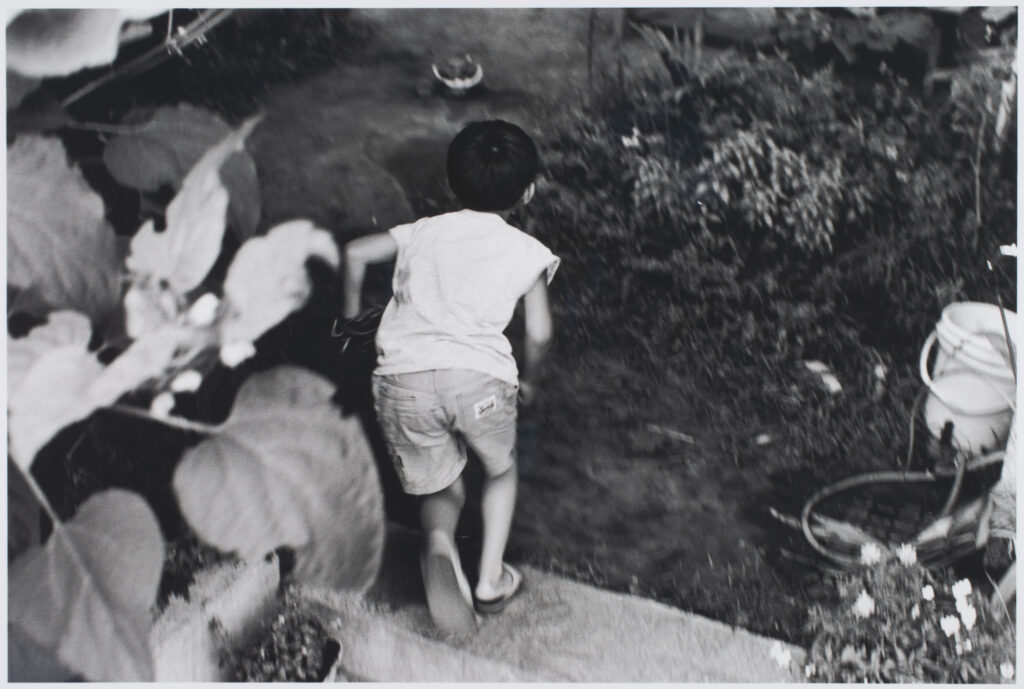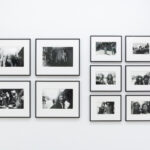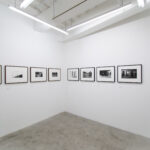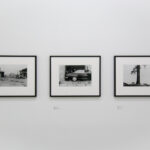Part 2





Part 1





Tokuko Ushioda, Shigeo Gocho, Yoshitaka Saji, Masao Sekiguchi, Kazuto Miura
Dates|[Part 1] December 6 – 24, 2023
会期| [Part 2] January 6 – 28, 2024
Venue|MEM map
Open Hours|13:00 – 19:00(On December 9 and January 27, the exhibition will be open until 16:30 due to talk events.))
The gallery is closed on Mondays. (Except when Monday falls on a holiday, in which case the gallery is open and closed the following day.)
Telephone|+81-3-6459-3205
Cooperation by Hiroichi Gocho, Contact Co., Ltd., Ikuko Saji, Kanako Saji, Ryotaro Saji, Kazushige Suzuki (Kuwasawa Design School), PGI
All exhibited works will be changed between Part I and Part II.
Closing party, Saturday 27th January from 7pm, at MEM.
–––––––––––––––
Talk Event Part 1
Date&Hour | Saturday 9th December, 17:00–18:30
Speaker | Kotaro Iizawa (Interviewer, Katsuya Ishida, MEM)
▷▷>>TICKET<<◁◁ ![]()
–––––––––––––––
Talk Event Part 2
Date&Hour | Saturday 27th January, 17:00–18:30
Speaker | Tokuko Ushioda, Ikuko Saji, Shinzo Shimao, Masao Sekiguchi, Kazuto Miura
SOLD OUT▷▷>>TICKET<<◁◁![]()
–––––––––––––––
Each Event
Japanese version only
Participation Fee: 1200JPY
Capacity 20 persons (Reservation required)
Venue: MEM(NADiff A/P/A/R/T 3F)
*Reservations must be made in advance through MEM’s online store.
*The gallery will be open until 16:30 on the day of the talk event.
In 2013, MEM held a solo exhibition in honor of the 30th anniversary of Shigeo Gocho’s passing. Now, a decade later, we have organized this exhibition to commemorate the 40th anniversary.
What was the nature of the style and phenomenon referred to as Konpora Shashin, the noteworthy subject of debate at the time and the movement with which Gocho’s works are associated? What kinds of ideas preoccupied the minds of these photographers as they captured their images? These tenderly portrayed everyday scenes faced fierce criticism from many who were deeply involved in the anti-establishment struggles of the times. Despite this, many similar expressions were born in the same period, and even today, with the proliferation of expressions, these images have an empathetic capacity that still resonates to this day.
This exhibition will examine the background of the development of a style of photography that emerged and attracted attention around the 1970s and its formation through the mysterious connections between students, assistants, and teachers at the Kuwasawa Design School.
The photographers included in this exhibition are Tokuko Ushioda, Shigeo Gocho, Yoshitaka Saji, Masao Sekiguchi, and Kazuto Miura.
Gocho and Sekiguchi collaborated to publish a photobook titled Hibi. Saji and Gocho ran a design office together, and Miura has continued to be involved in the management of Gocho’s legacy and the production of his prints until this day. Tokuko Ushioda was a senior to these four members and worked as an assistant for the class. The presence of teachers such as Yasuhiro Ishimoto and Kiyoji Otsuji also influenced their works in various ways.
The first part of this two-part exhibition will feature photographs taken by these five photographers while they were still students at the Kuwasawa Design School, while the second part will focus on their defining works post-graduation. In conjunction with this exhibition, we will publish a catalog that will include texts by each photographer (Yoshitaka Saji will be represented by his wife, Ikuko Saji) and Shinzo Shimao and Kotaro Iizawa, as well as a chronological table of events and other materials.
Related Exhibitions
Shigeo Gocho Exhibition
Dates | November 3 – December 24, 2023
Venue | Itami City Museum of Art, History and Culture (Hyogo)
The Spirit of Avant-Garde Photography: Transforming “Nothing Much”
TAKIGUCHI Shuzo, ABE Nobuya, OTSUJI Kiyoji, GOCHO Shigeo
Dates | December 2, 2023 – February 4, 2024
Venue | The Shoto Museum of Art (Shibuya, Tokyo)
Kazuto Miura exhibition
Dates | January 18 – 30, 2024
Venue | Gallery Rafu (Saitama Prefecture)
Exhibited Artists Biography
Tokuko Ushioda
Born in Tokyo in 1940, Tokuko Ushioda entered Kuwasawa Design School in 1960, where she studied under photographers Yasuhiro Ishimoto and Kiyoji Otsuji. In 1963, she graduated from the school, majoring in photography, and from 1966 to 1978, she taught photography at her alma mater and Tokyo Zokei University, developing a relationship with Shigeo Gocho and Fusako Kodama. In 1976, she had her first exhibition, Hohoemi no tejo/Smile was handcuffed at the Shinjuku Nikon Salon in Tokyo, and in 1978, she gave birth to her first daughter and married Shimao Shinzo. Her most notable works include Ice Box, published by Mitsumura Printing Co., Ltd in 1996, and Serie Bibliotheca, a series focusing on spaces with books and bookshelves. She began Serie Bibliotheca in 1995 and compiled the photographs into three photobooks published by Ushiomada: Images Nostalgiques de L’ éditeur <Misuzu> (2016), My Teacher’s Atelier (2017), and Bibliotheca: Views of the Books (2017). She received the 37th Ken Domon Award in 2018, the Photographic Society of Japan Artist’s Award, the 34th Higashikawa International Photo Festival Domestic Award, and the Kuwasawa Award in 2019. Her recent major solo exhibitions include My Husband (PGI, Tokyo) in 2022, and Lifelong Learning (Yokohama Civic Art Gallery Azamino) in 2023.
Shigeo Gocho
Born in 1946 as the second son of a hardware store owner in Kamo City, Niigata Prefecture, Gocho suffered from a spinal cord disease at the age of three and was bedridden for almost one year. From his teenage years, his works were selected for numerous art and poster exhibitions. In 1962, he entered Sanjo Commercial High School, studied Business, and joined the commercial art club. In 1965, he moved to Tokyo to become a designer and entered the Living Design Department of the Kuwasawa Design School. In 1967, encouraged by his former teacher, photographer Kiyoji Otsuji, he entered the Kuwasawa Design School’s Photography Department. After graduating in 1968, he began a career in design while continuing to take photographs. In 1971, he self-published his first photobook Hibi with his friend from the Kuwasawa Design School, Masao Sekiguchi, printing 1000 copies. In 1977, he held an exhibition and self-published a photobook under the same name, SELF AND OTHERS, which won the Photographic Society of Japan’s Newcomer’s Award one year later. In 1983, he returned to his hometown due to poor health where he continued to recuperate but passed away due to a heart attack on June 2 of the same year at the age of 36. In 1992, his work was featured in the eighth issue of deja-vu, a photography magazine, the chief editor was Kotaro Iizawa, and in 2004, a retrospective exhibition Shigeo Gocho 1946-1983 was held at the Niigata City Art Museum, Yamagata Museum of Art, and the Mitaka City Gallery of Art. In 2013, on the 30th anniversary of his passing, two photobooks were published in succession: Kodomo, published by Hakusuisha, and a new edition of Familiar Street Scenes, published by Yagisha in succession. In 2023, on the 40th anniversary of his passing, his complete works, Shigeo Gocho Works, were published by Akaaka Art Publishing, and retrospective exhibitions were held in Tokyo and Itami City.
Yoshitaka Saji
Born in Aichi Prefecture in 1946, Saji Yoshitaka joined his high school art club in his second year and began to attend an art preparatory school in Tokyo during the vacation of his third year. Aspiring to become a graphic designer, he entered the Living Design Department of the Kuwasawa Design School in 1965. He became interested in photography through his required courses, and in the third year of his graduate studies, he decided to major in photography. He studied under the tutelage of Kiyoji Otsuji and took classes with Shigeo Gocho. After graduating from the Kuwasawa Design School in 1968, he worked as a photographer’s assistant and, from 1971, became a freelance photographer shooting architectural models and interiors. To expand his professional horizons, he brought his photocollages to Hayakawa Publishing, which was selected for S-F Magazine’s publishing of Problems of Creativeness by Thomas M. Disch in 1973. He continued to produce illustrations and covers for Hayakawa Publishing until December 2020. From 1976 to 2011, he worked as an audiovisual engineer for the American School in Japan. In 1978, he established the design office Galaxy with Shigeo Gocho where they produced prints of characters for Gakken, a publisher of education-related products until 1983. In 1992, he visited Bali for the first time with his family, and since then he has regularly visited the island; in 1998 he set up a studio in Tegallalang village. He compiled 18 years of photographs from Bali in Melting Point – Bali, which he self-published in 2010. In 2014, he self-published another photobook, Fragments from the Layers of Time, and held a solo exhibition with the same title at ESPACE BIBLIO in Tokyo. In 2019, he had another solo exhibition in the same space titled East of Bali, Beyond the Mirror. Yoshitaka passed away after his 74th birthday in 2020 of pulmonary adenocarcinoma.
Masao Sekiguchi
Sekiguchi was born in Tokyo in 1946. In elementary school, he enjoyed baseball and took drawing lessons at a local art class. In the third grade, he won an award in a school sketch competition, an experience that later inspired him to pursue a career in design. In 1964, he entered the Ochanomizu Bijutsu Gakuin, and in 1965, he entered the Kuwasawa Design School. He studied graphic design and entered the photography course of the graduate school under the guidance of Kiyoji Otsuji; his classmates included Shigeo Gocho and others. He discovered the appeal of snapshots through an assignment to photograph May Day for his coursework. After graduating from the Kuwasawa Design School in 1968, he worked part-time at the architectural design office Atelier Block and as an assistant to the photographer Minoru Akiyama while continuing to shoot photographs independently. In 1970, he joined Takashi Kono’s DESKA (DESigners Kono Associates) as a photographer. In 1971, he co-authored Hibi with Shigeo Gocho, which was self-published and limited to 1000 copies. He held his first solo exhibition in 1988, Hibi Henpen, at Luna House in Shinjuku, and between 2002 and 2005, he had four consecutive solo exhibitions, Koto, at the Contemporary Photo Gallery in Shinjuku and self-published a photobook Koto 1969-2003 (the first edition was limited to 500 copies) which was a collection of snapshots taken over more than 30 years.
Kazuto Miura
Born in Tokyo in 1946, he enjoyed baseball as a child while taking drawing lessons at an art school. Encouraged by his father, he entered a high school where he could study printing and design. Around this time, he began to carry an affordable twin-lens reflex camera on excursions and school trips. Still, he did not truly develop an interest in photography because he was not satisfied with the images he produced. In 1964, he entered Ochanomizu Bijutsu Gakuin, and in 1965, he entered the Kuwasawa Design School. In his second year, he became interested in photography through an industrial design class he took taught by Ikkei Meshima, who gave him a photography essay assignment and went around the city taking snapshots. In his third year, he entered the Photography Department, where he took classes under the tutelage of Kiyoji Otsuji, and his classmates included Shigeo Gocho. He graduated from Kuwasawa Design School in 1968 and worked in the Photography Department of Toppan Printing Company. After working as an assistant at the Photography Office of Takeshi Fujimori, he became independent in 1970. He got married in 1975, and he spent one month in China with his family of four in 1986, compiling his experiences in Mo Hitotsu no Tenanmon – Oyako de Mitekita Chugoku (“Another Tiananmen – China as Seen by a Family”) published by Sowa Shuppan in 1990. He had his first solo exhibition in Shinjuku in 1989, On the record, and held a series of 10 solo exhibitions under the same title until 1996. In 1998, he released a photobook entitled correspondence, published by Mole. After the passing of Shigeo Gocho, Miura continued to maintain his film negatives and related materials and supervised many of Gocho’s exhibitions and photobooks.
Author Biography
Shinzo Shimao
Born in Kobe, Hyogo Prefecture, in 1948, Shinzo Shimao is the eldest son of the writer Toshi Shimao and his mother Miho. He grew up in Amami Oshima Island, his mother’s hometown. In 1970, he entered Tokyo Zokei University, and as part of the independent seminar movement, he published a coterie photography magazine number (11 issues) with others in the photography department. In 1974, he graduated from Tokyo Zokei University with a degree in photography. After graduation, he worked at a photo developing company, Reimeisha, and began his career as a freelance photographer, holding his first solo exhibition, China Town, in Galleria Grafica Tokio in Ginza, Tokyo. He participated in the activities of the independent gallery, Photo Gallery Prism, which was open in Shinjuku for a year and a half from 1976. In 1978, he married Tokuko Ushioda, whom he met through a community of ex-students of Kiyoji Otsuji, and their first daughter, Maho, was born in the same year. He published photobooks and held exhibitions of everyday scenes using his family as a subject while also publishing numerous books as an essayist. In 1979, he published the photography coterie magazine camera works tokyo (12 issues) and contributed to the third issue with “Shigeo Gocho Returns a Smile.” In collaboration with Tokuko Ushioda, he has continued to document the lives of ordinary people in China, Hong Kong, Macau, and other parts of Asia, publishing his works in Chuka Jinmin Seikatsu Hyakka Yuran (“Views from Chinese People’s Lifestyle Department Store”) published by Shinchosha in 1984. His major books include Kisetsu-fu (“Seasonal Breeze”), published by Misuzu Shobo in 1995; Seikatsu (“Lifestyle”), published by Misuzu Shobo in 1995; Maho-chan published by Osiris in 2001; Lands&Memory Tokyo – Amami, Sokonowareta Toki o Motomete (“In Search of Lost Time”) published by Kawade Shobo Shinsha in 2004; Wandering in China published by Osiris in 2008; and Kin-san Shumi-sha Sengen (“Prohibited Hobbyist Declaration”), published by Usimaoda in 2008.
Kotaro Iizawa
Born in Miyagi Prefecture, Japan, Kotaro Iizawa graduated from the Department of Photography at the Nihon University College of Art in 1977 and from the Graduate School of Art at the University of Tsukuba in 1984. As a graduate student at the University of Tsukuba, he participated in a monthly study group of young people interested in photography held at the home of Kiyoji Osuji, a professor at Tsukuba. This study group allowed Iizawa to build relationships with people such as photography historian Ryuichi Kaneko. In 1985, he was involved in the preparation of the Tsukuba Museum of Photography ’85: Paris, New York, Tokyo exhibition and since then has participated in numerous exhibitions and publications such as The Complete Collection of Japanese Photography series (Shogakukan, 1985-1988), the series of exhibitions of post-war Japanese photography held at the Yamaguchi Prefectural Museum of Art from 1989 to 1991, and the History of Japanese Photography (Museum of Fine Arts, Houston, 2003). From 1990 to 1995, he served as editor-in-chief of the photography magazine deja-vu, featuring various photographers and critiques of the ever-evolving trends in contemporary photography. In 1993, he published a special feature article on Shigeo Gocho for the magazine’s eighth issue
His notable publications include Shashin Bijyutsukan e Youkoso (“Welcome to the Photography Museum”) (Kodansha Gendai Shinsho, 1996), Dejigurafi – Dejitaru wa Shashin wo Korosunoka? (“Dejigurafi – Will the Digital Kill Photography”) (Chuokoron-Shinsha, 2004), Shashinteki Shikou (“Photographical Thinking”) (Kawade Books, 2008); Fukayomi! Nihon Shashin no Choyumeisaku 100 (“Deep Dive! 100 of the Most Famous Japanese Photographs”) (PIE International, 2012); Gendai Nihon Shashin Archive: Shinsai Ikou no Shashin Hyogen 2011-2013 (“Contemporary Japanese Photography Archive: Photographic Expression after the Earthquake 2011 – 2013”) (Seikyusha, 2015); Keywords in Contemporary Japanese Photography (Film Art Inc., 2017); and Shashinshu no Hon: Meiji – 2000 Nendai made no Nihon no Shashinshu 662 (“Book of Photobooks: 662 Photbooks from the Meiji period to the 2000s”) (Kazen, 2021) which he co-published with Shun Uchibayashi. Iizawa continues to be a prolific contributor of photographic commentary in a wide range of media, and in addition to his writings, he also judges and organizes photographic exhibitions.
Part 1 : Installation views

























